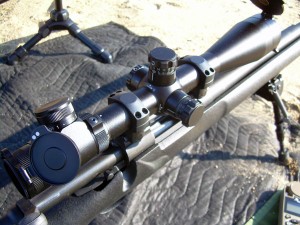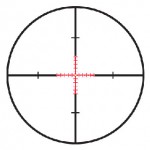Kestrel 4000 NV Wind Meter. Everything You Need, Nothing You Don’t
- October 24th, 2011
- Write comment
Most shooters know that environment effects the travel of their bullet. Some actually have a basic idea of how to dope wind or at least have enough ammo to guess until they get it.  The fact is that if you can’t figure environmental conditions it’s going to be difficult to make those critical shots. It’s one of the most difficult problem solving issues in long range shooting. In order to learn you need to know more than just how fast the wind is moving which is where Kestel’s model 4000 weather instrument comes into play. U.S. Special Forces, combat weather teams, wildland firefighters, smoke jumpers, Mt. Everest expeditions and IRL pit crews are just some of the organizations that use this meter. We chose the Kestrel 4000 because of it’s ability to calculate density altitude. Density altitude is the the height when measured in terms of the density of the air rather than the distance from the ground. In other words you may be at 312 feet in distance but at say, 1000 feet based on density altitude. Now you could use a piece of paper, a pencil and this formula
The fact is that if you can’t figure environmental conditions it’s going to be difficult to make those critical shots. It’s one of the most difficult problem solving issues in long range shooting. In order to learn you need to know more than just how fast the wind is moving which is where Kestel’s model 4000 weather instrument comes into play. U.S. Special Forces, combat weather teams, wildland firefighters, smoke jumpers, Mt. Everest expeditions and IRL pit crews are just some of the organizations that use this meter. We chose the Kestrel 4000 because of it’s ability to calculate density altitude. Density altitude is the the height when measured in terms of the density of the air rather than the distance from the ground. In other words you may be at 312 feet in distance but at say, 1000 feet based on density altitude. Now you could use a piece of paper, a pencil and this formula  or you can turn on the 4000 and get an instant, accurate reading. Once you set reference values based on the location of where you zeroed your gun it’s a simple matter to make critical field adjustments regardless of where you are shooting or what conditions are. Measurements include: Barometric pressure,Pressure trend, Altitude, Relative humidity, Heat stress index, Dewpoint, Wet bulb temperature, Density altitude, Wind chill, Air, water, and snow temperature, and Current wind speed, Average wind speed, Maximum wind gust.In addition to measuring the current conditions, it tracks and stores up to 2000 sets of data, and data can be uploaded to a PC with the optional Kestrel Interface. Available in various configurations of night vision (pictured) and non-night vision starting at $249.00.
or you can turn on the 4000 and get an instant, accurate reading. Once you set reference values based on the location of where you zeroed your gun it’s a simple matter to make critical field adjustments regardless of where you are shooting or what conditions are. Measurements include: Barometric pressure,Pressure trend, Altitude, Relative humidity, Heat stress index, Dewpoint, Wet bulb temperature, Density altitude, Wind chill, Air, water, and snow temperature, and Current wind speed, Average wind speed, Maximum wind gust.In addition to measuring the current conditions, it tracks and stores up to 2000 sets of data, and data can be uploaded to a PC with the optional Kestrel Interface. Available in various configurations of night vision (pictured) and non-night vision starting at $249.00.



